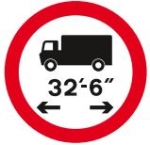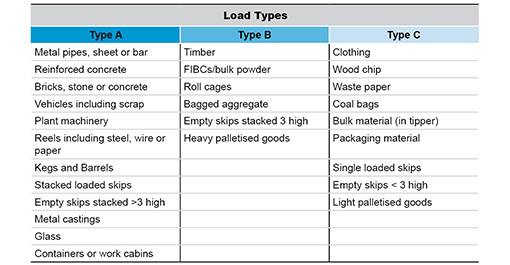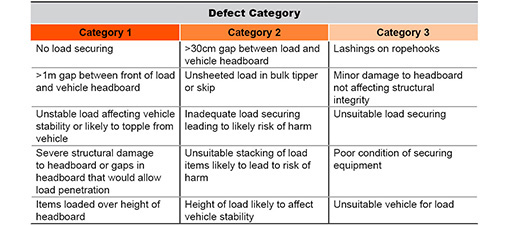 New rules for laden vehicles are coming into effect. You must bring laden vehicles for driving tests in the following categories from Friday 15 November 2013:
New rules for laden vehicles are coming into effect. You must bring laden vehicles for driving tests in the following categories from Friday 15 November 2013:
- B+E – car and trailer
- C1+E – medium sized goods vehicle and trailer
- C – large rigid lorry
- C+E – large lorry and trailer
- D1+E – minibus and trailer
- D+E – bus or coach and trailer
You can train in laden vehicles and bring them before this date if you wish.
Up until now, drivers have not had to practice or be tested in laden vehicles, and that doesn’t represent the scenarios that drivers will experience once they have their full licence. The rules are being introduced in the interests of road safety to more accurately assess the driving of heavier, laden vehicles to ensure that drivers are safe and aware of the differences in how the vehicles will handle when laden.
| Vehicle category | Vehicle or trailer affected | Minimum real weight | Minimum load requirement |
|---|---|---|---|
| C | Vehicle | 10,000 kg | 5 x 1,000 litre IBCs |
| C+E ‘drawbar’ vehicle | Towing lorry and trailer | 10,000 kg for lorry and 5,000kg for trailer | 5 x 1,000 litre IBCs (lorry) and 3 x 1,000 litre IBCs (trailer) |
| C+E articulated lorry | Semi-trailer | 15,000 kg | 8 x 1,000 litre IBCs |
| B+E, C1+E, D1+E and D+E | Trailers | 800 kg | 600 kg of aggregates or 1 IBC of 1,000 kg or 600 kg capacity when filled with water |
What is a secure load?
When practicing, training or testing, loads must be secure. A secure load is attached to the vehicle so that it will not fall off or affect vehicle stability and pose a risk of danger or injury to other road users.
The Road Vehicles (Construction and Use) Regulations 1986 state that ‘…the weight, distribution, packing and adjustment of the load of such vehicle or trailer shall at all times be such, that no danger is caused or is likely to be caused to any person in or on the vehicle or trailer or on a road.’
A load must be secured to a vehicle to ensure it prevents 100% forward, 50% sideways and 50% rearwards movement.



Rules about the load
When taking the test there are specific load requirements:
- bagged aggregates like sand, stone chippings, gravel or any other recycled material packages (but not toxic materials) in sealed transparent bags – the bags must:
- all weigh the same
- be at least 10 kg
- have the weight clearly stamped on them
- water, in intermediate bulk containers (IBCs) which are made from semi-transparent moulded plastic usually reinforced with a wire framework
The examiner may need to inspect an IBC used as ‘load’ for the test, so it’s important that they can visually check it has the correct water level.
You can’t use any other type of load.
Weights
The ‘real weight’ is the actual weight of the vehicle and the load combined. This cannot be more than the maximum authorised mass (MAM).
Maximum authorised mass
Maximum authorised mass (MAM) means the weight of a vehicle or trailer including the maximum load that can be carried safely when it’s being used on the road.
This is also known as gross vehicle weight (GVW) or permissible maximum weight.
It will be listed in the owner’s manual and is normally shown on a plate or sticker fitted to the vehicle.
The plate or sticker may also show a gross train weight (GTW), also sometimes called gross combination weight (GCW). This is the total weight of the tractor unit plus trailer plus load.
Unladen weight
The unladen weight of any vehicle is the weight of the vehicle when it’s not carrying any passengers, goods or other items.
It includes the body and all parts normally used with the vehicle or trailer when it’s used on a road.
It doesn’t include the weight of the fuel or, if it’s an electric vehicle, the batteries.
Now is a good time for you to check you know the Highway Code in relation to weights and measures. Go through the revision questions by clicking here.
Driver Certificate of Professional Competence (CPC)
These rules also apply to vehicles used for Driver CPC practical tests.
Vehicles used for Driver CPC periodic training don’t have to be laden. You can provide periodic training using a laden vehicle if you want to, but you’ll need to follow certain rules.
If you don’t have an operator’s licence
You must use a vehicle that’s loaded according to the specified load requirements if you don’t have an operator’s licence.
If you have an operator’s licence
You don’t need to use a vehicle that’s loaded according to the specified load requirements if you have an operator’s licence. You can use a vehicle carrying its normal load.
